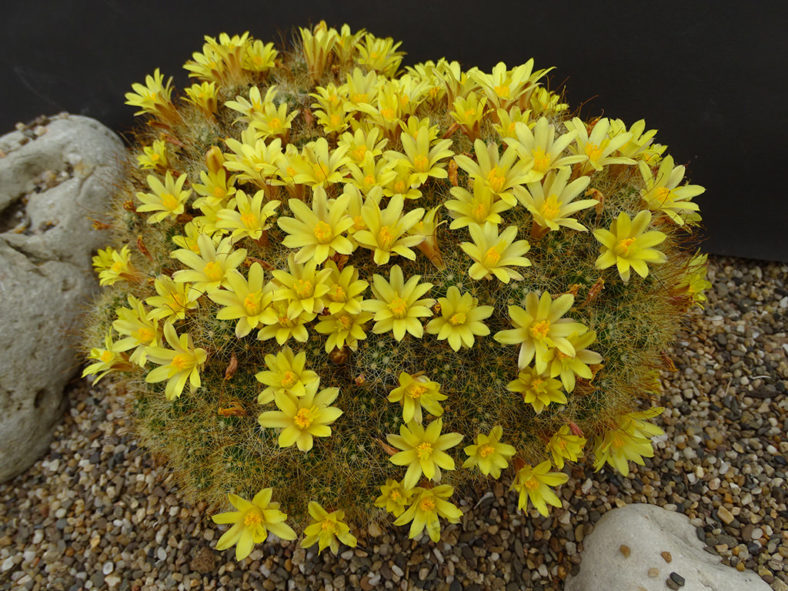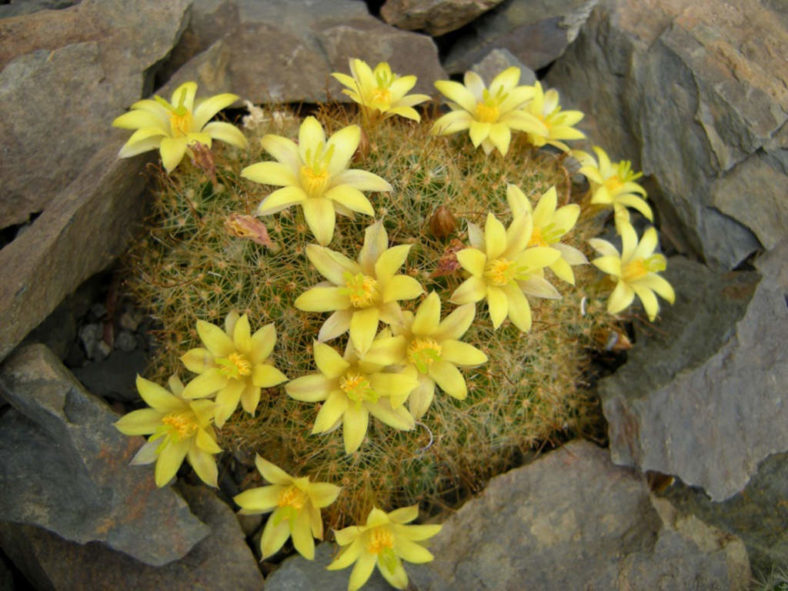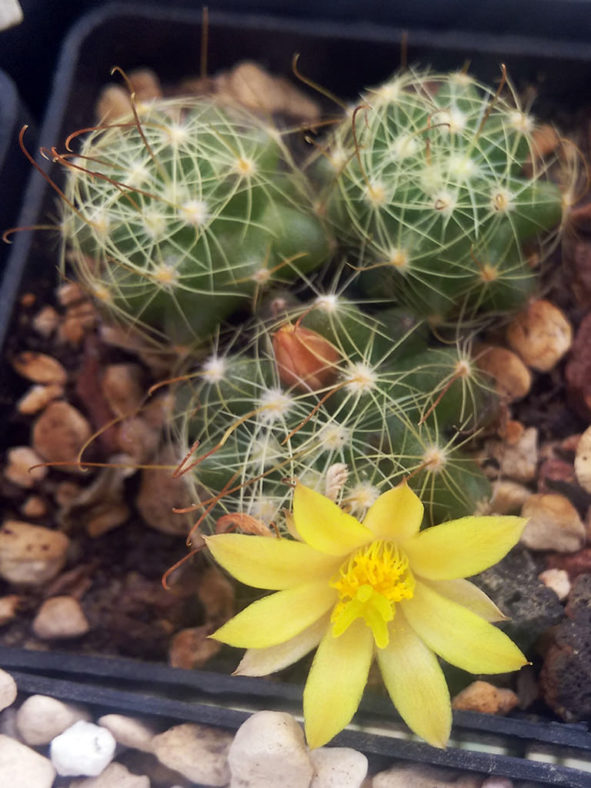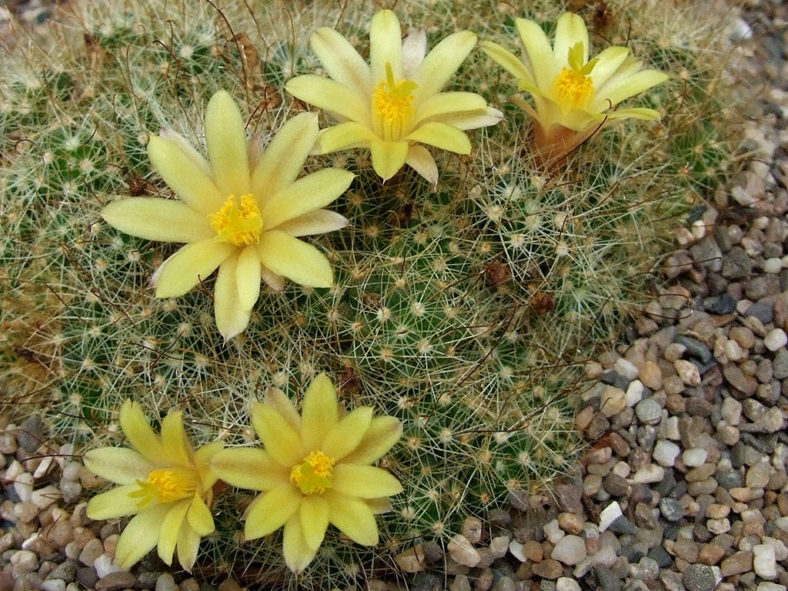Scientific Name
Mammillaria surculosa Boed.
Synonym(s)
Dolichothele surculosa, Ebnerella surculosa
Scientific Classification
Family: Cactaceae
Subfamily: Cactoideae
Tribe: Cacteae
Subtribe: Cactinae
Genus: Mammillaria
Etymology
The specific epithet "surculosa (sur-ku-LO-sa)" means "suckering, producing suckers or sucker-like shoots" and refers to the growing habit of the species.
Origin
Mammillaria surculosa is native to northeastern Mexico. It occurs in highly isolated patches at elevations that range from 3,120 to 3,940 feet (950 to 1,200 m).
Description
Mammillaria surculosa is a small cactus that forms colonies of spiny, bright green stems with prominent cylindrical tubercles tapering slightly at the apex. It can grow up to 4 inches (10 cm) tall with a spread of 20 inches (50 cm). The stems are usually globose or elongated and can reach up to 1.6 inches (4 cm) in height and 1.2 inches (3 cm) in diameter. The tubercles are tipped with clusters of one brownish-yellow, hooked, somewhat twisted central spine measuring up to 0.8 inches (2 cm) long and 12 to 15 stiff, white to pale yellow radial spines measuring up to 0.4 inches (1 cm) long.
The flowers are funnel-shaped, lemon yellow, and appear in spring. They can reach up to 1 inch (2.5 cm) in length and about 0.7 inches (1.8 cm) in diameter. The fruits are oblong, green to reddish or greenish-brown, and contain light brown seeds.

How to Grow and Care for Mammillaria surculosa
Light: Plant this cactus in an area of your garden that receives 4 hours of direct sunlight daily. If growing M. surculosa indoors, place it near the brightest window in your home or office to ensure your cactus gets enough light. Place the pot on the balcony or in the garden for extra light from spring to fall if possible.
Soil: M. surculosa requires a soil mix that provides root aeration and good drainage, whether grown outdoors or indoors. Use commercial cactus potting mixes or create your own potting mix.
Hardiness: This cactus is heat tolerant but is not a cold-hardy plant. M. surculosa can withstand temperatures as low as 30 to 50 °F (-1.1 to 10 °C), USDA hardiness zones 10a to 11b.
Watering: From spring to fall, water deeply and wait for the soil to dry out before watering again. Never let the pot sit in water. Suspend watering in the winter.
Fertilizing: M. surculosa can benefit from fertilizing during the growing season. Apply a water-soluble fertilizer for cacti and other succulents. Suspend feeding during the winter when the plant goes dormant.
Repotting: Repot every two or three years into a slightly larger pot. The best time to repot your M. surculosa is late winter or early spring, but the repotting process can be done almost any time of the year.
Propagation: There are two easy ways to propagate M. surculosa: by seeds or by dividing offsets. The best time to remove offsets is in spring and summer. Sow the seeds in late spring or summer.
Learn more at How to Grow and Care for Mammillaria.
Toxicity of Mammillaria surculosa
M. surculosa is considered non-toxic to both humans and pets.
Links
- Back to genus Mammillaria
- Succupedia: Browse succulents by Scientific Name, Common Name, Genus, Family, USDA Hardiness Zone, Origin, or cacti by Genus
Photo Gallery
Click on a photo to see a larger version.


